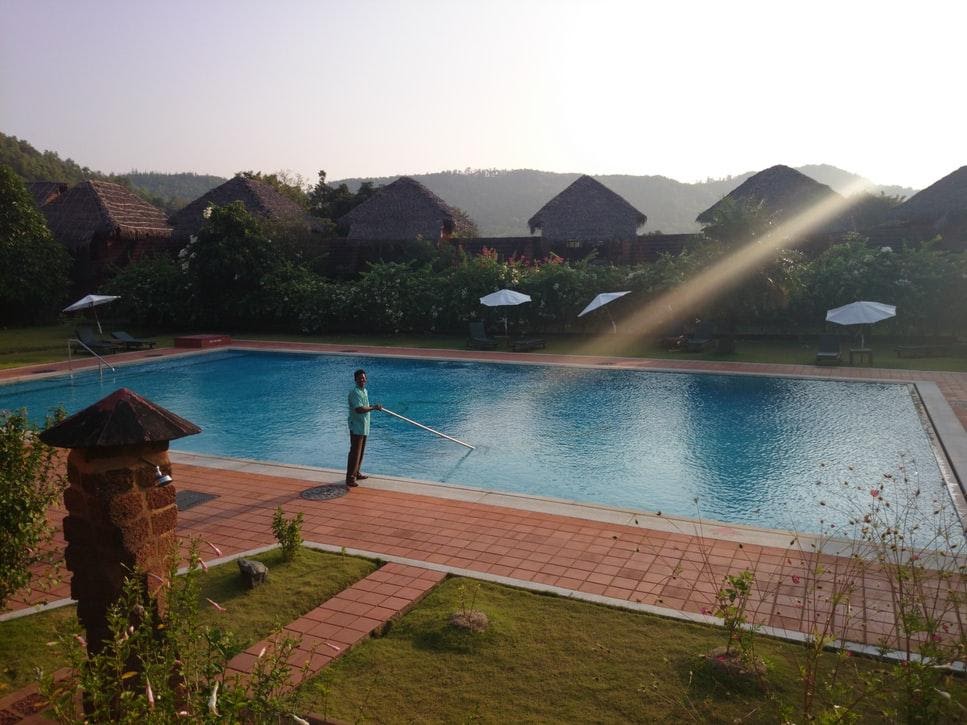Plastics, twigs, dry leaves, and other unnecessary remains can quickly accumulate in the pool water and become a major buzz-kill, not to mention a health concern for the swimmers. People come to public swimming pools to practice their skills, enjoy with their loved ones, and beat the summer heat. Owning a public pool comes with a lot of responsibility. It is essential to keep the pool water clean and disinfected to provide a safe place for the public to enjoy and prolong the pool’s life.
Maintaining a pool can be easy when you know the right way of keeping it refreshing, inviting, and sparkling clean for daily use. Chlorine-based disinfectants, like TCCA 90 chlorine tablets (trichloroisocyanuric acid), are the most frequently used oxidizers and disinfectants for swimming pools treatment. These disinfecting agents are your best and easiest way of achieving clear and clean water and disinfecting swimming pools.
Let’s have a look at the many ways to can keep a public pool disinfected and clean for people to use safely:
Test Pool’s Chemistry
Advanced technology has made it easy to test and monitor the chemistry of a swimming pool. Test kits and strips are readily available to tell you whether or not the swimming pool is chemically balanced.
It is best to check the pool’s chemical balance at least once a week during the summer season and at least once every two weeks during the cooler seasons if the pool is being used.
Maintain the Right pH Levels
The pH levels of the swimming pool must be maintained between 7.2 and 7.8. The optimal level is 7.4 as it creates a safe and comfortable for the swimmers. If the pH level is low, you must reduce the level of chlorine in the pool water.
The chlorine content becomes less active when the pH level of the pool increases. For instance, if the pH level is at 8.0, the chlorine would be 10% effective or active. People make the mistake of adding more amount of chlorine in this situation. Instead, you must maintain the pH level to use less amount of chlorine.
Regularly Clean the Skimmer Basket
This basket is located on the pool’s side. It is responsible for skimming the water surface before contaminants and debris become heavy, saturated, or float to the bottom of the pool. You must regularly clean the skimmer basket to ensure it is efficiently functioning.
The right way of maintaining the effective functioning of the pool is to open its panel, take out the basket from the panel, and remove the contents. The cleaner the basket, the better it will work.
Clear out the Lint and Hair Pot
Besides the skimmer basket, another piece of equipment that plays a major role in keeping the pool water clean and safe is the lint and hair pot. It gathers the debris that has escaped the skimmer basket.
This pot is located inside the pump and must be cleaned every week for a public swimming pool. All you have to do is switch the pump off and release the pressure. There are different types of pump lids, but there is usually a small basket inside the pool’s glass lid.
Regularly clear this pot and ensure it isn’t damaged or broken, as even the smallest of stone falling through the pot can create major issues in the pump.
Monitor Water Level
Maintaining the right water level is also an essential part of pool maintenance. Is the level of water too low or too high? The pool water must be at the center level of the pool tile or pool skimmer for best performance and results.
If the level is low, the pump runs dry and gradually burn up. If the level is too high, the door of the skimmer will stop working correctly, and it won’t efficiently clean out the debris.
Check the Chlorine Levels
The inline chlorinator or automatic deck chlorinator must be frequently checked to ensure the right chlorine tablet levels, clogging, or loading. TCCA 90 chlorine and other chlorinating tablets and agents can leave a strong smell if used too much.
As per the unit’s features and style, you must keep adding a constant residual of chlorine agent for a balanced flow.
Check the Ozone Generator
The public swimming pools often have an ozone generator, which must be regularly checked to ensure swimming pool sanitization.
Ozone is a type of oxygen that helps purify the water as it can quickly react with the contaminants. It also helps in reducing the chlorine amount in the water if there is a need.
Restrict Shocking the Pool
Public pools are frequently shocked to keep the water clean and disinfected. However, there is no need to shock the pool too much, mainly if there is an ozone system. You might need a chlorine-based shock to remove the nitrates from human, animal, or bird defecation that could transform into algae food.
If you have to shock the pool, the best time is at night when there is no one present in it and there is no sun to degrade the shock’s effectiveness. You can also use a non-chlorine shock if the pool is being frequently used or use the chlorine-based shocks during the day to weaken its effect.
Regular and thorough swimming pool maintenance is essential to keep it disinfected and safe for the public to use. Make sure to perform the maintenance once weekly during the summers, as this is the most crowded season.
Preventative maintenance of the pool can go a long way. Running the pumps and regular circulation is vital as well. Follow these tips to disinfect and clean public swimming pools to make sure that the public can enjoy this recreational activity without any hassle or health issues.
